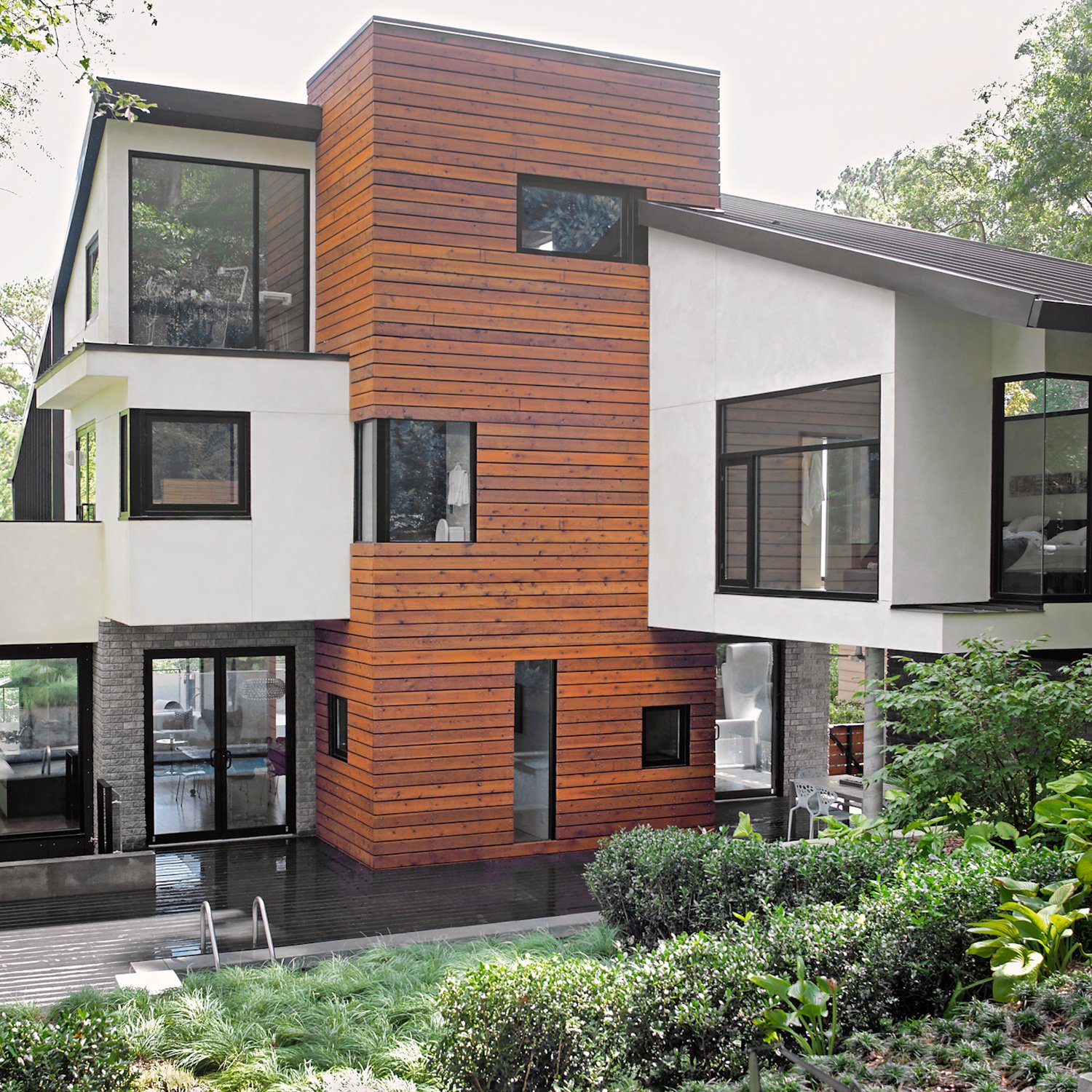#8086. Contrasting Modern Facade with Vertical Wooden Cladding
This modern residential house is a striking example of contrast architecture, where various textures and materials are harmoniously combined. The central accent of the facade is the vertical wooden cladding in a warm brown shade, creating an expressive volume that contrasts with the white plastered surfaces of the rest of the building.
The facade is organized according to the principle of compositional balance, where the wooden element acts as a dominant feature, while the other parts play a supporting role. The horizontal arrangement of wooden panels creates a rhythmic pattern, giving the facade dynamism despite its geometric rigor. The lower level of the house is partially faced with gray stone, adding a third texture to the already existing dialogue between wood and plaster.
Large glazed surfaces of different sizes and proportions serve not only a functional purpose but also enliven the composition, creating an interesting play with reflections and transparency. Some windows are asymmetrically positioned, which enhances the contemporary character of the building.
The slightly sloped roof with a minimalist cornice complements the overall restrained image of the structure. The landscape design of the plot with neat greenery and ornamental shrubs harmoniously frames the architectural solution, creating a natural transition to the surrounding environment.
When designing your own facade, you can adopt the technique of contrasting combination of materials, creating visual interest. Vertical division of the facade into sections with different finishes helps avoid monotony and emphasize the architectural idea. It's also important to pay attention to the balance between solid and glazed surfaces, which in this case creates a sense of openness while maintaining privacy.
